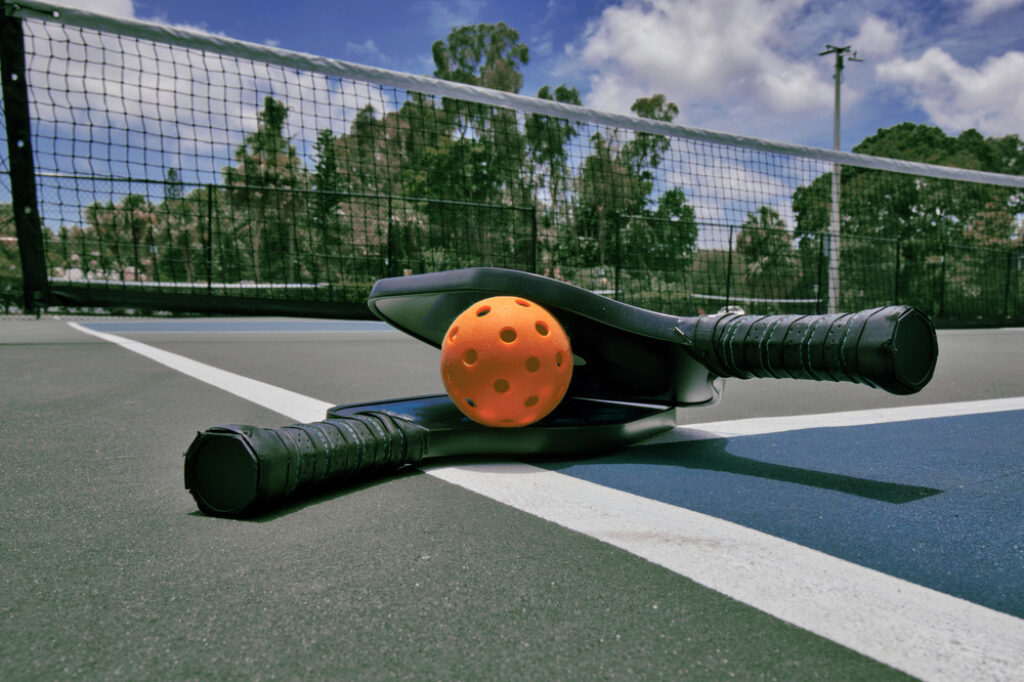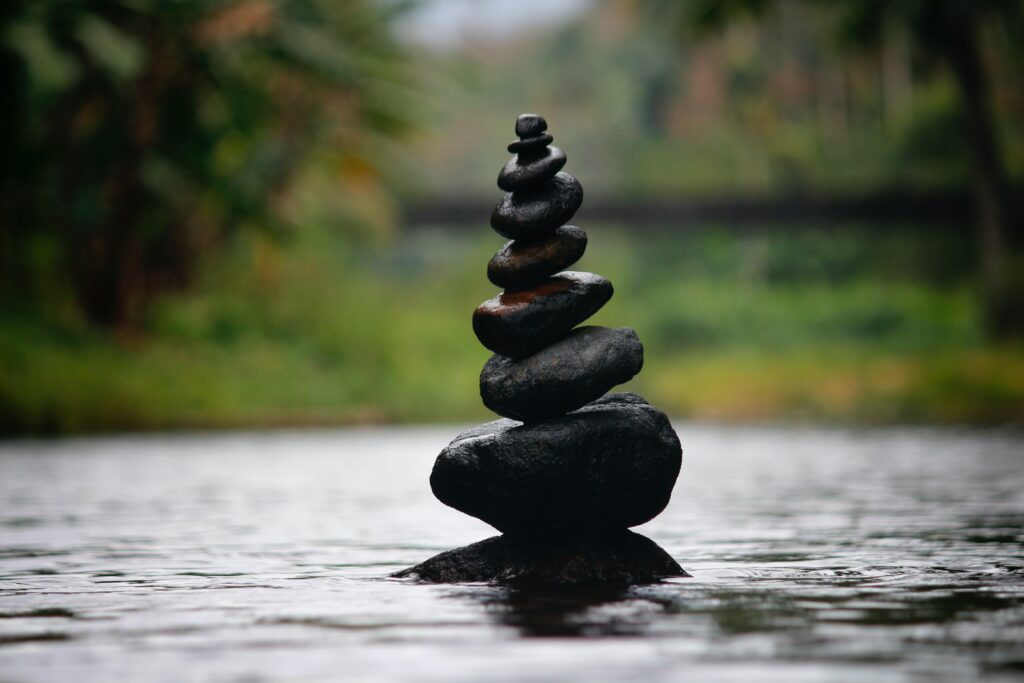The answer is yes, absolutely! With some simple modifications and planning, a tennis court can be transformed into multiple pickleball courts. Not only is this a cost-effective solution, but it also allows communities to take advantage of existing infrastructure. However, using tennis facilities for pickleball does come with some challenges. By implementing best practices, pickleball and tennis players can coexist in harmony.
A Quick Introduction to Pickleball
Before diving into the specifics of using tennis courts, let’s first give a quick overview of pickleball for those unfamiliar with the sport. Pickleball was invented in 1965 by three dads in Washington state who were looking for an activity to keep their families entertained. The game combines elements of tennis, ping pong, and badminton.
Matches are played on a badminton-sized court with a slightly modified tennis net. Players use paddles to hit a perforated plastic ball over the net, scoring points against opponents. Pickleball can be played in singles or doubles format, and the simple rules make it easy for beginners to pick up. However, there is still plenty of technique and strategy involved for more competitive play.
In addition to being fun and social, pickleball provides great exercise. The quick bursts of movement and cardio provide physical benefits for players of any age. No wonder pickleball has exploded from basement rec rooms to a global sports phenomenon, with thousands of dedicated players.
To get started with pickleball, be sure to check out our paddle recommendation guide and other resources at pickleballforall.com.
Transforming a Tennis Court for Pickleball
Tennis courts and pickleball courts have some key similarities that make sharing facilities possible. They are both rectangular courts with a 3-foot high net running across the middle. However, there are a few modifications required to optimize a tennis court for pickleball:
- The most important change is lowering the net height. Tennis nets are 3 feet high at the center, while pickleball nets are 2 feet 6 inches. Most tennis nets can be ratcheted down to the proper pickleball height. For everything you need to know about the dimensions of a pickleball court, click here.
- Temporary lines must be added to mark out the boundaries of two or four pickleball courts on each tennis court. These are usually painted or taped onto the surface.
- The doubles court dimension in pickleball is 20 feet wide by 44 feet long. Pickleball lines use the doubles sidelines of a tennis court to determine width. Then the length can be set using temporary baseline markings.
With these adjustments, a regulation-size tennis court can fit two pickleball courts lengthwise. There is enough space to add a third court across the width of the tennis court as well. This allows for efficient use of space and the ability to accommodate multiple pickleball games.
Why Use Tennis Facilities for Pickleball?

Converting tennis courts into pickleball venues offers some great advantages for communities faced with a shortage of dedicated pickleball facilities.
Cost-Effective
It is extremely expensive to build new courts from the ground up. Turning existing tennis infrastructure into multi-use facilities saves on construction costs. Court time can also be used more efficiently with the ability to run multiple pickleball games.
Makes Use of Available Space
Tennis courts are ubiquitous, with public parks, recreation centers, schools and other locations already equipped with this infrastructure. Making small modifications allows them to be used for a growing sport without requiring new real estate.
More Accessible to New Players
Those eager to try pickleball for the first time may find it easier to access a conveniently located tennis facility rather than traveling to a dedicated pickleball site. Shared use introduces more people to the sport.
Potential Challenges and Concerns of Shared Facilities
While using tennis courts for pickleball has some great advantages, it also comes with a few potential challenges that communities must consider:
Noise Complaints
The pickleball “pop” when the ball is hit can generate noise, especially during active volleys. Nearby residents may find the noise disruptive if games are happening early or late. Sound barriers may help mitigate noise transmission.
Court Damage
The smaller pickleball is harder than a fuzzy tennis ball. Some claim this leads to more wear and tear on court surfaces. However, studies on court damage are inconclusive, with many factors involved. Proper maintenance and rotation of courts can prevent excessive damage.
Usage Conflicts
Tennis and pickleball players may butt heads over who gets priority for court time. Scheduling processes and communication will be important to balance the needs of both groups fairly.
Finding Harmony Through Best Practices

With proper planning and management, tennis and pickleball players can harmoniously coexist using the same facilities. Here are some tips:
- Install temporary sound barriers or plant vegetation as a natural noise buffer.
- Clearly delineate court time for each sport and communicate scheduling widely.
- Rotate use of courts to spread out wear and tear.
- Proactively engage community members and address concerns.
- Train facility staff to handle usage conflicts diplomatically.
- Utilize pickleball paddle recommendations from experts to reduce noise.
The Future Looks Bright for Pickleball Growth
Governing bodies like the USA Pickleball Association (USAPA) and U.S. Tennis Association (USTA) are actively working together to provide guidance on shared facility use. As governing bodies and communities implement smart strategies for dual courts, access to pickleball will continue improving across the country.
In some places, the popularity of pickleball may justify creating dedicated courts, which helps alleviate the crunch, especially in pickleball hotbeds. However, the use of existing tennis infrastructure will remain vital for most communities. With understanding on both sides and implementation of best practices, tennis and pickleball can thrive together.
Get In On the Fun!
Pickleball is an addicting sport, offering both social connection and healthy activity for all ages. Don’t let a lack of dedicated courts stop you from giving pickleball a try. Head out to your local tennis facility, bring the right paddle, and experience this fun paddle sport for yourself. Get involved in the community discussion about shared use policies. We can all work together to allow this great sport to continue flourishing across the country.
For more tips to help you get started with pickleball, be sure to check out our paddle recommendation guide and other resources at pickleballforall.com. I look forward to seeing you on the courts and hearing about your pickleball journey!








[…] Pickleball on Tennis Courts? […]